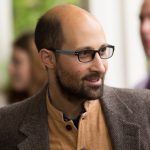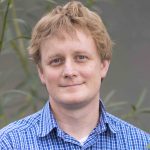World Business Council for Sustainable Development (WBCSD)
6A. Understanding and overcoming obstacles – when do NbS not deliver for people, biodiversity, or climate and why?
Read full session summaryWatch session recording on YouTube
Download a full report including all session summaries and take-homes (PDF).
Session summary
Session 6A, Understanding and overcoming obstacles – when do NbS not deliver for people, biodiversity, or climate and why?, explored when, why and how interventions badged as NbS fail and how those failures should be addressed and further prevented in the future.
Forrest Fleishman presented a series of reforestation studies in India, which found no difference in land cover following decades of government tree planting schemes, ultimately resulting in failure. This was due to a hostile administrative system, arising from colonial legacies of profit-extraction and badly functioning institutions, while attempts at reform were hampered by complexity and entrenched political power. Instead, successful interventions are those that focus on democratising decision-making, reforming land tenure systems, and raising living standards. NbS must address the root causes of deforestation and environmental degradation, which are often export-oriented agriculture and land tenure insecurity. NbS are often touted as low-hanging fruit that are ready for deployment, low-cost and high-potential for benefits, but they require deeply complex institutional and political changes to create an enabling environment. Interventions which encourage community forestry and agroforestry are more likely to be successful in India and similar contexts, as their entry point can be to improve livelihoods first and foremost.
After exploring political and institutional barriers, William Anderegg discussed biophysical barriers to good NbS implementation, in particular the biophysical risks of fire and pests that can compromise NbS permanence. Currently, forest offset protocols are lacking best-available science to estimate their permanence risk. This means that the actual risk is much higher than what the offset buffer pools are prepared to handle and therefore these and other related policies and protocols must be reassessed. Open-access scientific information, including publicly available climate risk maps, datasets and tools are urgently needed for this science to be widely shared and implemented. Furthermore, modelling the projections of risks to ecosystems under different climate scenarios shows that we must halt the use of fossil fuels as climate change will render NbS less effective.
Next, Giulia Carbone made the point that offsets, when used after all other decarbonization efforts following the mitigation hierarchy, need to be of highest quality, which involves paying attention to details of the local context, to relationships between all involved parties, to local policies and to timing. Jean Robert Bwangoy described a successful case study of REDD+ in the Democratic Republic of the Congo, where a big challenge has been enhancing the understanding among local people of the concept of carbon credits. Anna Lehmann delved into the importance of Indigenous Peoples in protecting ecosystems, stressing how we must create “eye-level partnerships” with them, make offset project contracts fully transparent and open-source, and ensure that free, prior and informed consent is not just done as a box-ticking exercise. Lastly, Edit Kiss brought in the perspective of the investor and financial community to help address the challenges and risks mentioned, stating that local communities should not be responsible for shouldering the financial risks of such offset schemes.
The session concluded that NbS are not a silver bullet, that trade-offs are pervasive and challenges, particularly those of institutional change and permanence risk, are significant, but that these can be mitigated through tailoring interventions to local contexts, addressing root drivers, considering land tenure reform, incorporating the latest scientific research, and working closely with IPLCs.
Key take-homes
- It is critical to address root causes of land and biodiversity degradation to provide an enabling context for NbS (no silver bullet, these are deeply complex and political).
- Science plays a critical role to ensure NbS deliver for people, nature, or climate and why, e.g. assessing climate risk.
- Offsets need to be used in-line with the mitigation hierarchy, and of highest quality (robust environmental and social safeguards).
- Generating quality offsets requires paying attention to local context, including relationships between implicated stakeholders and the policy context.
Speakers
-

Chair
James Smith
Director, Natural Climate Solutions, World Business Council for Sustainable Development
James is Director of Natural Climate Solutions (NCS) at the World Business Council for Sustainable Development (WBCSD) where his work focuses on helping companies on the responsible use of NCS carbon credits and the integration of natural climate solutions broadly into net zero strategies, with the goal of scaling investment in NCS for climate mitigation and adaptation. James holds a PhD in tropical ecology and has experience as a NCS project developer and impact investor. Prior to joining WBCSD, James worked for Mirova Natural Capital investing in diverse NbS projects, building upon experience developing avoided deforestation and forest restoration projects for Fauna & Flora International.
-

Speaker
Forrest Fleishman
Associate professor in the Department of Forest Resources at the University of Minnesota
Learning from failures: Nature based solutions, colonial legacies, property rights, and political organizing, with evidence from IndiaForrest Fleischman is an associate professor of environmental policy in the Department of Forest Resources at the University of Minnesota. His research examines the interface of science, political advocacy, and administrative processes in the implementation of nature based solutions, and he has conducted research in India, Mexico, and the US. In the last few years his work has increasingly focused on developing a "social science of ecological restoration," mostly focused on the global south, while examining the mechanisms of environmental policy change, mostly focused on environmental justice issues in Minnesota.
-

Speaker
William Anderegg
Associate Professor, School Of Biological Sciences, University of Utah
Leveraging advances in global ecology to quantify permanence and additionality in forest nature-based climate solutionsWilliam Anderegg received his Ph.D. from Stanford University, was a NOAA Climate & Global Change Postdoctoral Fellow at Princeton University, and is now an Associate Professor at the University of Utah. His group studies how climate change affects forest ecosystems, including tree physiology, species interactions, carbon cycling, and biosphere-atmosphere feedbacks, and aims to provide cutting-edge science for nature-based climate solutions. His recent work involves estimating the climate risks to forest offset projects in the US and examining claims of additionality with satellite data.
-

Speaker
Giulia Carbone
Director, Natural Climate Solutions Alliance, World Business Council for Sustainable Development
Building the demand for high quality natural climate solutionsGiulia Carbone is the Director of the Natural Climate Solutions Alliance, a platform supported by WBCSD and the WEF, bringing together public and private stakeholders to identify opportunities and barriers to investment into carbon credits in new, and existing markets, to increase financing for natural climate solutions. Between 2006 and 2021, Giulia served as Deputy Director of the Global Business and Biodiversity Programme at the International Union for Conservation of Nature (IUCN). During her tenure at IUCN, she headed projects in renewable energy, tourism, sport, agri-food, apparel, mining, infrastructure, and oil and gas sectors. Previously she spent 8 years at the UN Environment Programme.
-

Speaker
Jean Robert Bwangoy
Project Director for the Mai Ndobe REDD+ project
Developing NbS Projects for success: making REDD+ work on the ground for local communitiesJean Robert Bwangoy was born in the Democratic Republic of the Congo near the black-water lake called Mai Ndombe, where his grandfather had been Chief of a local tribe. After studying agroforestry in Canada and the United States, he worked for the DRC’s forestry department on forest maps and deforestation analysis, before returning to his ancestors’ lands. Today Bwangoy runs the Mai Ndombe REDD+ Project, whose 300,000 hectares of protected forest includes his grandfather’s former tribal territory.
-

Speaker
Anna Lehmann
Global Climate Policy Director, Wildlife Works
Equitable participation of forest communities in climate finance: the Peoples Forests PartnershipAnna holds an MSc in Agricultural Engineering from Göttingen University, Germany, and started her career as field economist alongside government funded forest conservation and rural development programs. Humbled by the knowledge and wisdom of farmers, indigenous and local communities around the world she pursues carbon markets as a means to drive investments into nature-based livelihoods and has been involved in the carbon markets since 2001. In 2019, she joined Wildlife Works as Global Climate Policy Director, where she works with Governments and corporates to develop Indigenous People and Local Community (IPLC) centred forest conservation and restoration projects. She holds a seat on the Executive Committee of the Peoples Forests Partnership.
